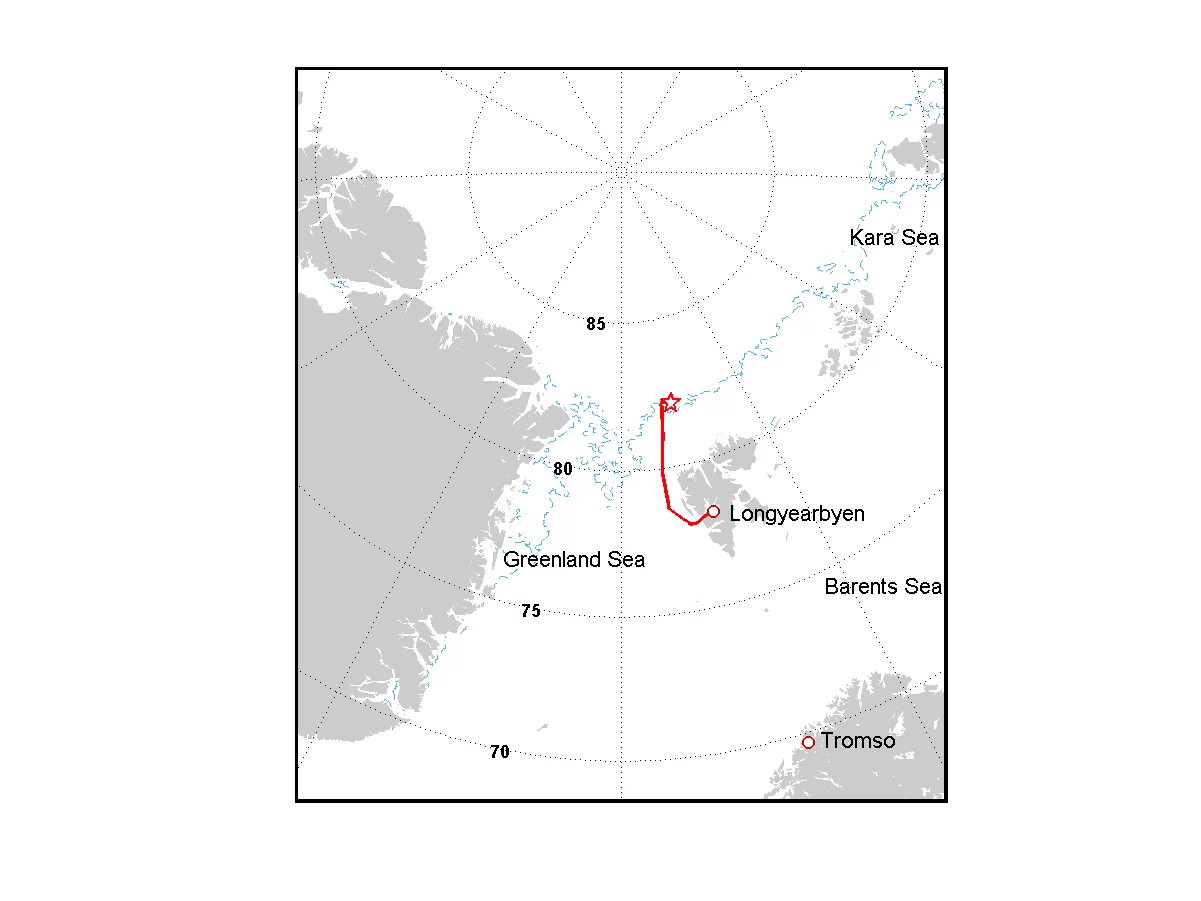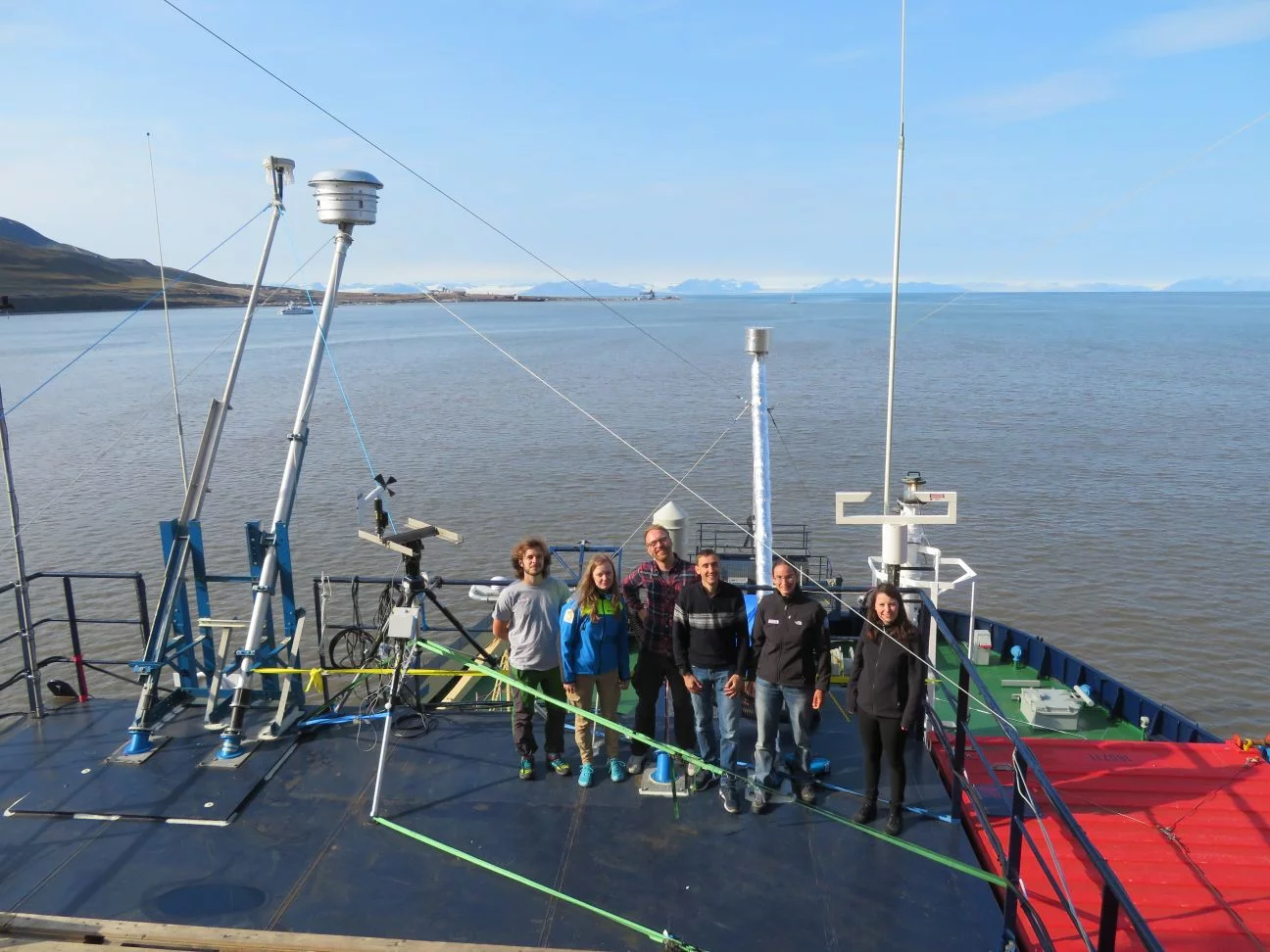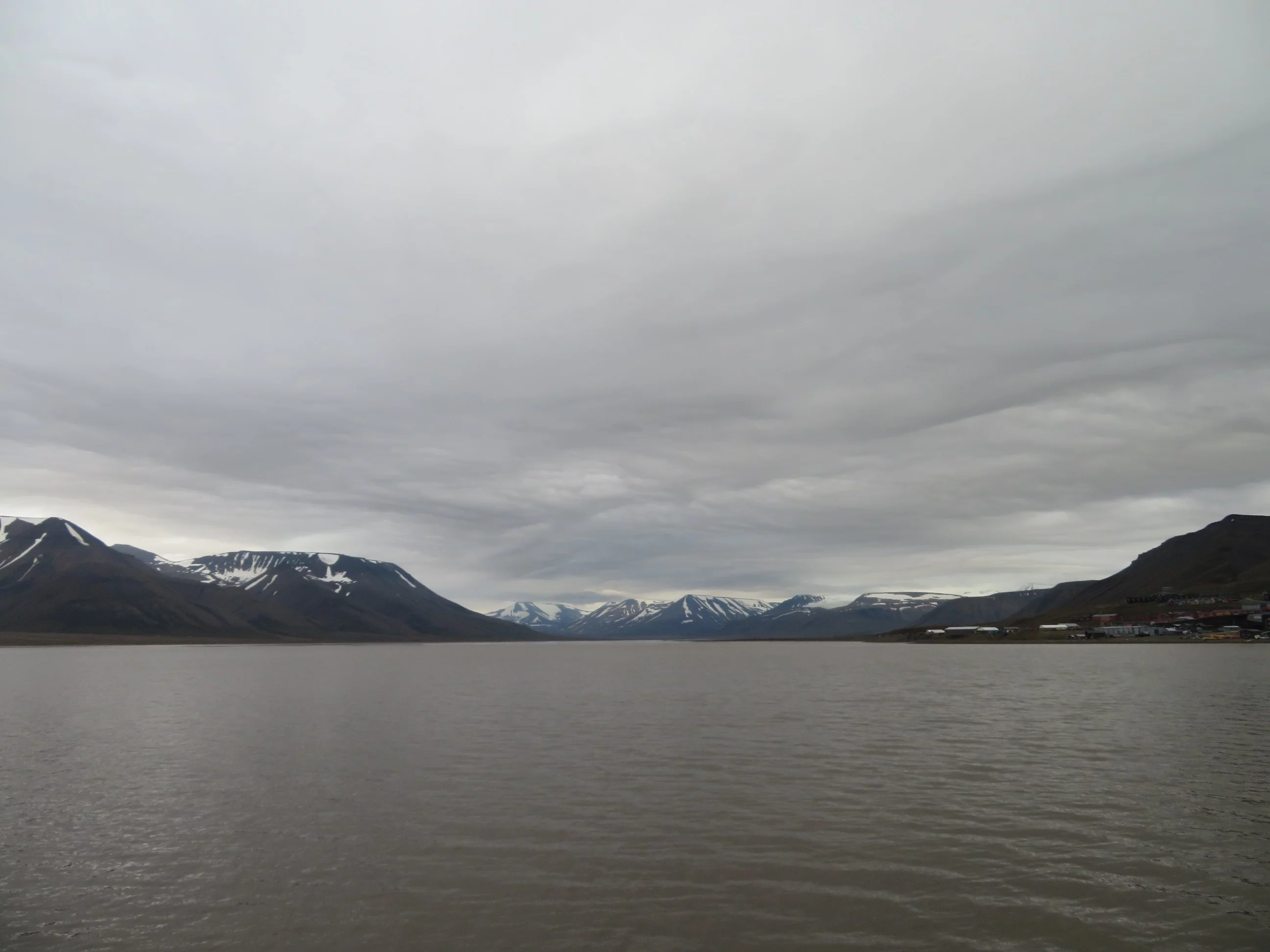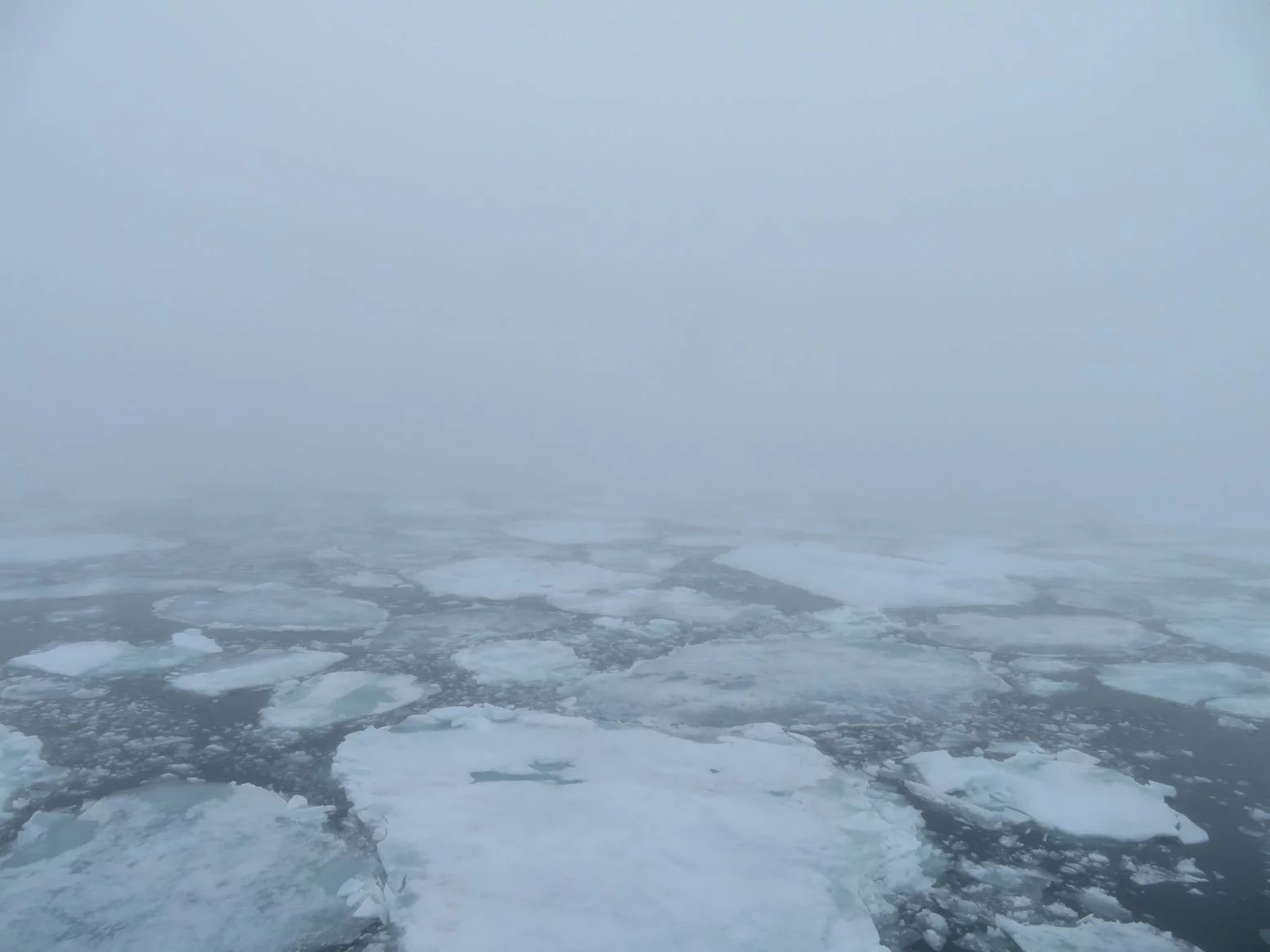Start
Current position: 82° 12′ N, 10° 24′ O (marginal ice zone)
Heading to the Marginal Ice Zone
These conditions, described meticulously by the instruments of the boundary layer meteorologists, are a perfect test for our various types of aerosol sampling inlets: the total inlet which collects aerosol particles and droplets, the interstitial inlet which selects particles that have not formed droplets, and the counter flow virtual impactor which selects only particles that have formed droplets. The inlets pass the test and we are content with the set-up and station. During the same 24 hours the "offline aerosol group" collected a large number of filters on which they perform chemical analyses (e.g., determination of major ions and organic compounds) and ice nucleation tests. Most other projects have research questions targeted at the conditions in the high North that involve setting up equipment on the ice. Those groups use the time to sort out their equipment to be ready in the next couple of days, when we break the pack ice and they might have a chance to get off the ship with the helicopter.
back to all blog entries





